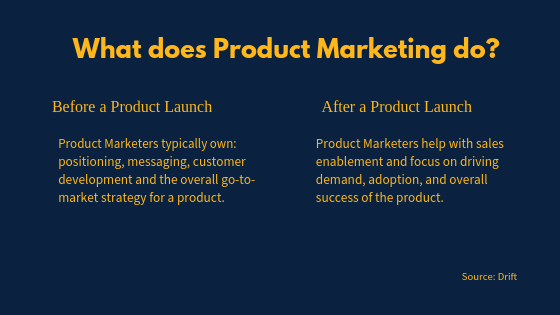The thing I’ve hated the most is the thing I “always wanted to do”…when I was in college. When I was in college, I just knew I wanted to work in PR and advertising. I found the field creative and exciting. and even when people told me the money was in sales, I still wanted to work in PR and advertising. I was a volunteer intern in the public relations and advertising department at the Audubon Zoo, and the more I opportunities I had, the more I fell in love with the field. When I graduated, those were the jobs I looked for.
Fast forward, and now I bristle when someone tries to put me in the advertising role, even when that role is more so than just advertising. And I get so frustrated when I see Brand Manager positions posted only to realize the hiring company is actually looking for a product marketer – someone to hand hold accounts.
So, what’s the difference? Plenty if you’re looking for one thing and get the other. Plenty if you were hired for one thing and expect to do the other.
Consider Marketing as the umbrella for all of the activities to build awareness of your company and its products. Marketing is responsible for protecting the brand and promoting it (often through advertising). Marketing includes all media (paid, earned, shared and owned), as well as social, your website, direct mail and loyalty programs.
Advertising
Advertising is the part of marketing primarily focused on acquisition and sales. It is primarily thought of in terms of “traditional media” – billboards, television, radio, and print – and now encompasses social and digital paid initiatives.
Advertising might be the oldest form of marketing. As a field, it came into its own aro1800s. However, advertising existed for far longer than that. Former Copyblogger Chief Content Writer Demian Farnsworth once described advertising as an ancient art. “In the Babylonian seaports, merchants hired barkers to announce the arrival of wine, spices, and fabrics. Citizens in Greece hung “Lost” posters in hopes of being reunited with children, jewelry, or slaves.” And elaborately painted signs (billboards) sprung up throughout Pompeii to announce plays, carnivals, and races. 1944 marked the first English-language advertisement offering a prayer book for sale. And, one could argue the first sustained advertising campaign was the effort to colonize the New World.
Product Marketing
Product marketing is a process focused effort bringing marketing and sales together for a single goal of driving demand for the product. Product marketers are the key in the bottom of the typical marketing funnel – the close. They are intentionally focused on the CUSTOMERS, rather than prospects and leads. While the responsibilities of a product marketer can include positioning and messaging, ultimately the job is ensuring the sales team knows how to talk about the product as well as making sure customers know how to use it.
Bottom line is that product marketing is focused on one thing: the product. The brand or who makes the product is not of importance. It’s all about the features and benefits, and in B2B cases, perhaps use cases and testimonials. Product marketers know their products inside and out.
Branding
Brand Marketing is more about appealing to the human emotion rather than the customer. Brand marketers are focused on defining the source of the products – who they are, what they value – and then spreading that message. Simply stated, rather than focusing on HOW a product works, brand marketers focus on WHY they are meaningful to the customer through the use of symbols, design, and language IN advertising
One of the brand marketers most useful tools is the brand style guide which gives direction for how communications are developed and executed to reinforce the reason the brand exists in the consumer’s life.
Brand marketing is of particular importance when products are highly competitive or when they’ve matured to a commodity level.
So, which is better?
Although some elements may be more important at a variety of points in the company’s life cycle, a truly effective business strategy includes all three. Branding determines the style and direction of advertising. Advertising can create awareness for new leads. Product marketers can take those newly aware leads and turn them into customers.
Taking time to understand the differences will help you find the right job for the right person.




Recent Comments